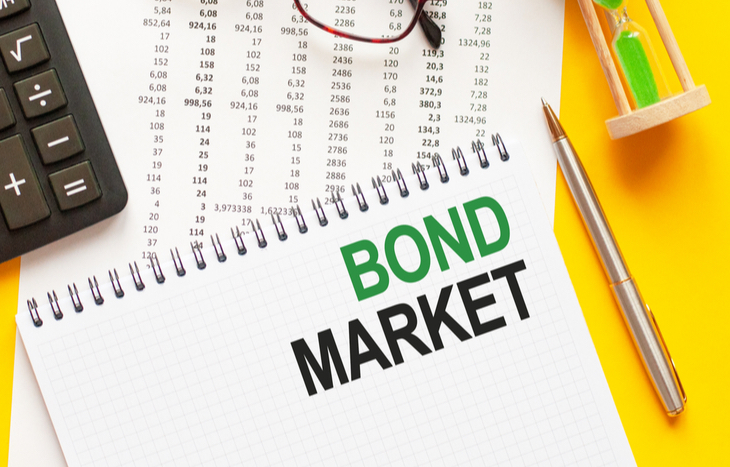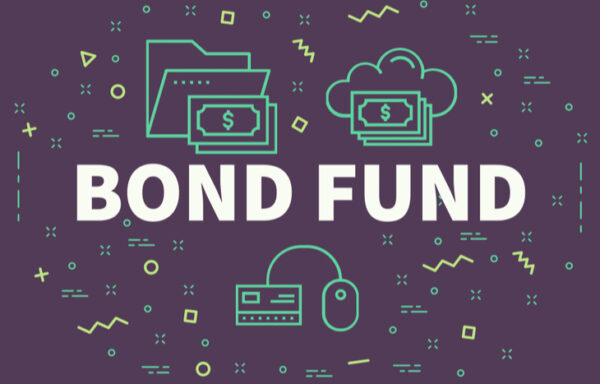How Does the Bond Market Work?
When people talk about the bond market, they’re actually talking about many markets. There are many different types of bonds, bought, sold and redeemed in different places. The three largest examples are the Treasury bond market, corporate bond market and municipal bond market. Any time you purchase a bond from the government or a company, you’re active in the bond market.
The bond market is often considered in parallel to the stock market. While the stock market ebbs and flows constantly, the bond market stays very stable. This is because bonds themselves are stable. They’re among the lowest-risk investments because of their fixed interest rates. While interest and yield rates fluctuate, they’re much less volatile than stock prices. It begs the question: how exactly does the bond market work?

What is a Bond?
Bonds are a form of debt security—meaning they represent a debt owed to the holder. The issuer of the bond needs money and offers the bond as a promise to repay a financier, with interest. For those buying bonds, they’re a wealth-building instrument. A bond is a fixed-income instrument. The bondholder will get their initial investment back, along with fixed interest payments along the way.
The bond itself is a simple promissory note. A very basic example might look like this:
XYZ Company wants to finance new facilities in Indonesia. They need $2 billion to accomplish this, so they issue two million bonds at $1,000 per bond, with an interest rate of 2.5% over five years. Buyers give XYZ Company $1,000 upfront, with the expectation they’ll receive that money back in five years. In the meantime, they’ll receive annual payments of $25 in interest income, amounting to $125.
Bonds are a win-win for both buyers and sellers (issuers). Sellers get the infusion of capital they need to finance large expenditures. Buyers get a very stable investment at a fixed rate of return.
Keep in mind that bonds aren’t a foolproof investment. Companies can default on bonds and are more likely to if their financials are in bad shape. So-called “junk bonds” are bonds issued below an investment-worthy credit standard. Typically, the higher the interest rate of a bond, the riskier it is. If an issue defaults on a bond, that bond is worthless.
Types of Bonds
Not all bonds are the same. Aside from differing interest rates and term lengths, bonds come from different issuers. Here’s a look at the most common bonds, from different corners of the greater bond market.
- Corporate: Companies issue corporate bonds to retail and institutional investors. These bonds help them finance large purchases or new ventures, such as mergers, acquisitions and expansions.
- Investment-grade: These bonds have a higher credit rating, which implies less risk. They’re more attractive to institutional investment firms hedging against more volatile investments.
- High-yield: Bonds with a higher interest rate—typically over a shorter term. They’re considered “riskier” bonds, although they often have less risk than stocks. They’re a higher-risk, higher-reward form of bond.
- Municipal: These are bonds issued by cities, states and counties. They’re usually issues to finance infrastructure projects. There are three types of “muni” bonds: general obligation, revenue and conduit bonds.
- Treasury: Issued by the federal government, these bonds are the safest investment, since they’re guaranteed by the United States government. They come in the form of T-bills, notes, bonds and TIPS.
While there are fewer options for bond investing than stocks or even currencies, investors will find a gamut of options in the bond market. Bond amount, coupon, maturity and issuer all play a role in the risk and reward of a bond investment.
How to Buy, Sell And Trade Bonds
There are two main ways to buy bonds: directly and through a broker. When buying corporate bonds, most people go through a broker. This process is similar to buying stock in that company, although corporate bonds are typically only available in increments of $1,000. Buying bonds comes with certain stipulations that stocks may not have.
As an aside, individuals can also purchase bonds through an ETF. Investing in a bond ETF is more akin to investing in a derivative, since you don’t actually hold the bond.
The form of bond investing occurs directly. This is most common for people buying treasuries or municipal bonds. Investors can visit the United States Treasury website to buy bonds. Or, they can purchase short-term bonds through local municipal treasuries, or even banks. Bondholders can also redeem their bonds at these destinations.
Key Bond Market Terms to Know
The bond market doesn’t have as much language and jargon as other markets, but there are still a variety of key terms investors should know. Here are some of the most prevalent terms governing bond investments:
- Coupon: The annual percentage paid against the bond in a given year.
- Maturity: The date when the bond will be completely repaid to the investor.
- Premium: A corporate bond trading above the issued price of $1,000.
- Price: The cost to purchase the bond, which can vary based on the term.
- Yield: The total profit the bond generates after its maturity date.
These terms become more plentiful and complex as you dive deeper into the world of bond trading. For most bond investors, the above terms are the most important to know.
The Basic Functions of The Bond Market
Are you interested in investing in bonds? If so, sign up for the Wealthy Retirement e-letter below. You can learn more about bond investing while finding your path to financial independence.
Bonds represent financing for long-term projects and innovations. Companies issue bonds to pay for acquisitions and huge purchases instead of accruing debt from a conventional capital source. Likewise, governments often fund costly infrastructure projects with bond investments. The bond market plays a major role in ensuring financial stability for both buyers and issuers. And, when the stock market hits a correction, the bond market is a more stable fallback for generating wealth.





